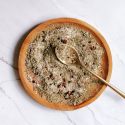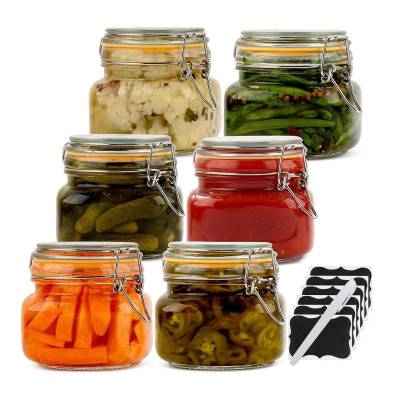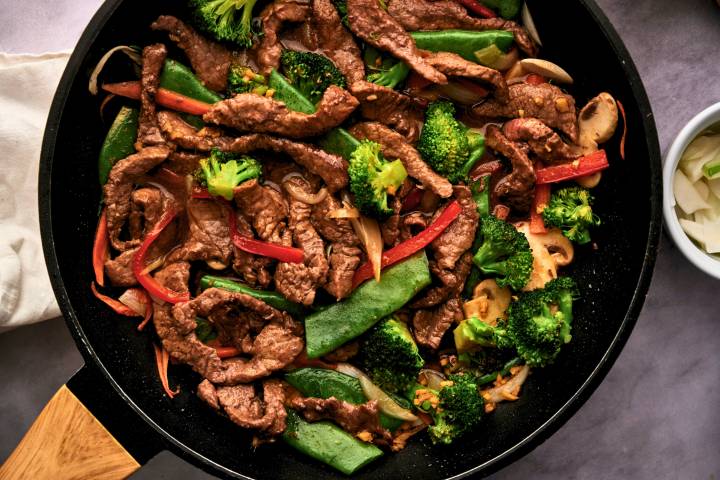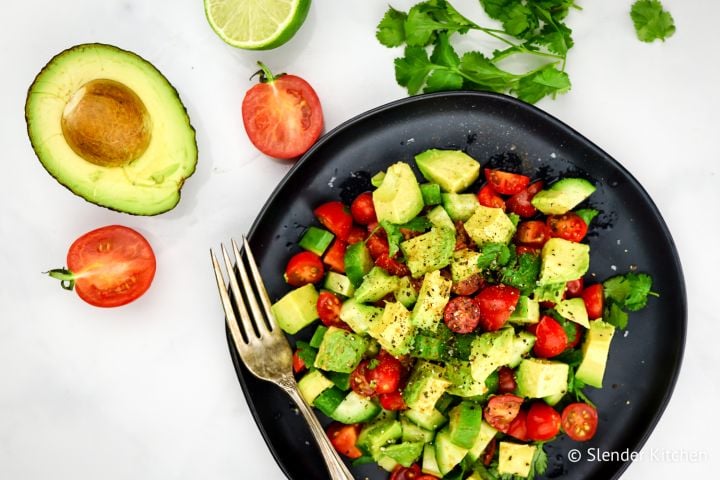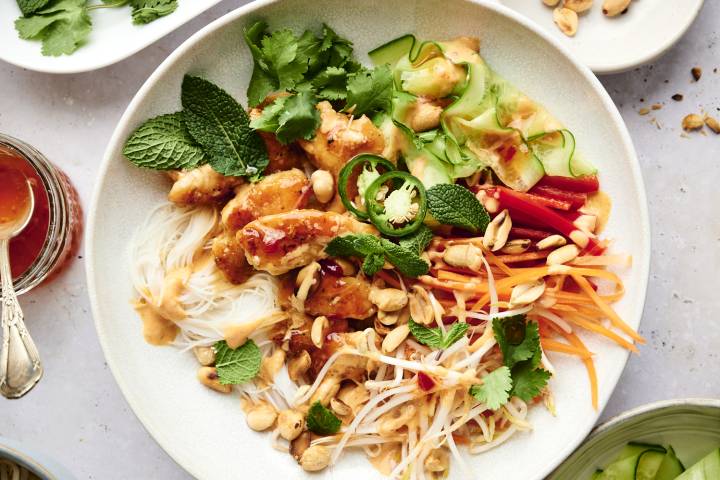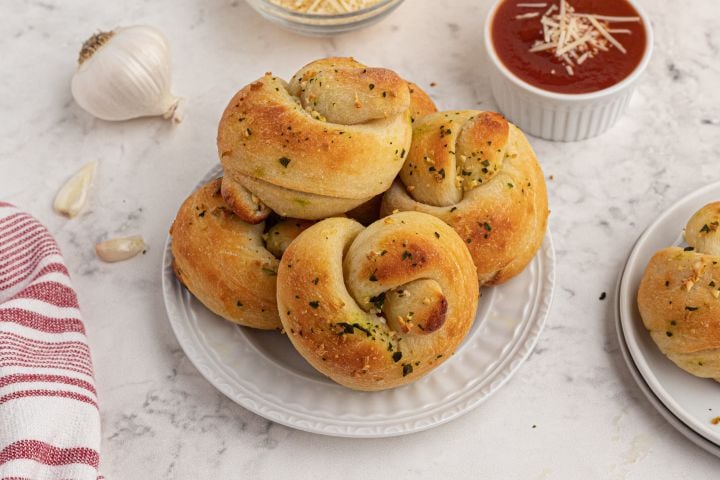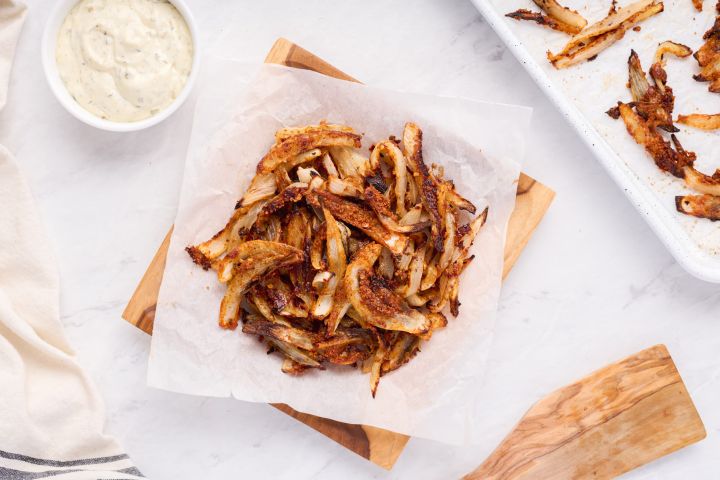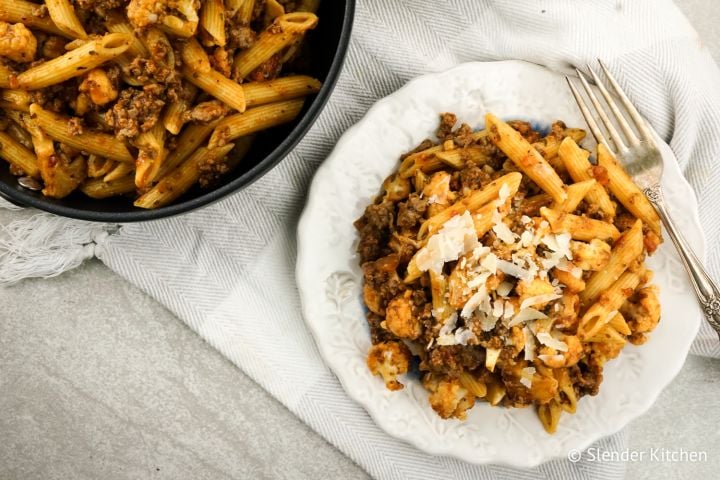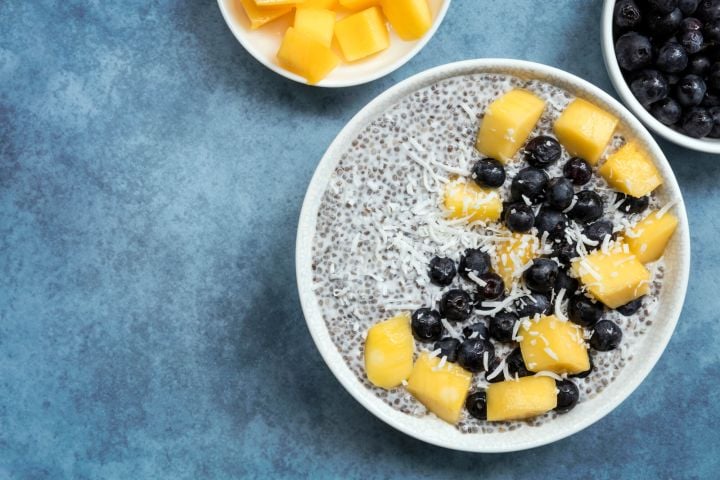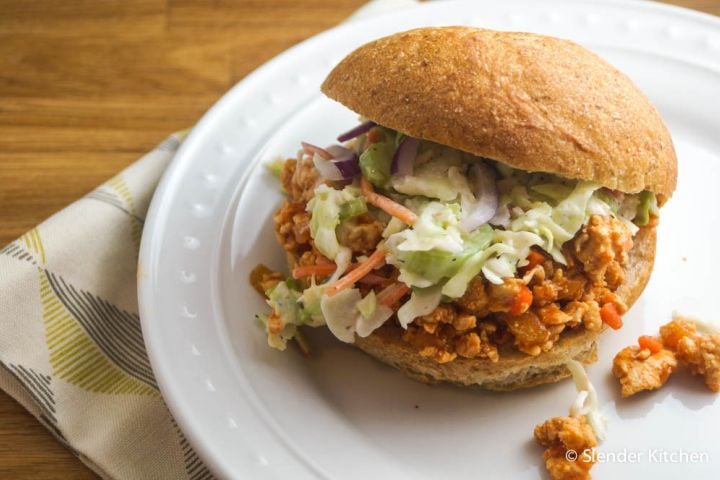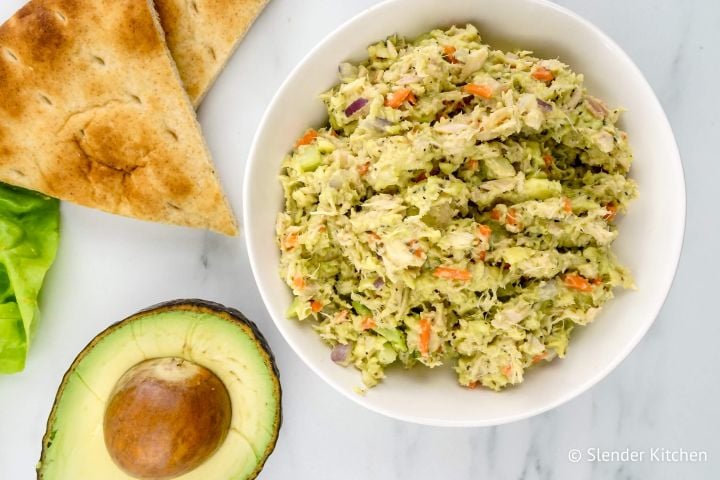Fajita Seasoning
Homemade fajita seasoning blend to make the very best chicken, steak, shrimp, and vegetable fajitas at home. This easy spice blend is packed with flavor, tastes better than store-bought, and is made with spices you likely have right in your pantry.
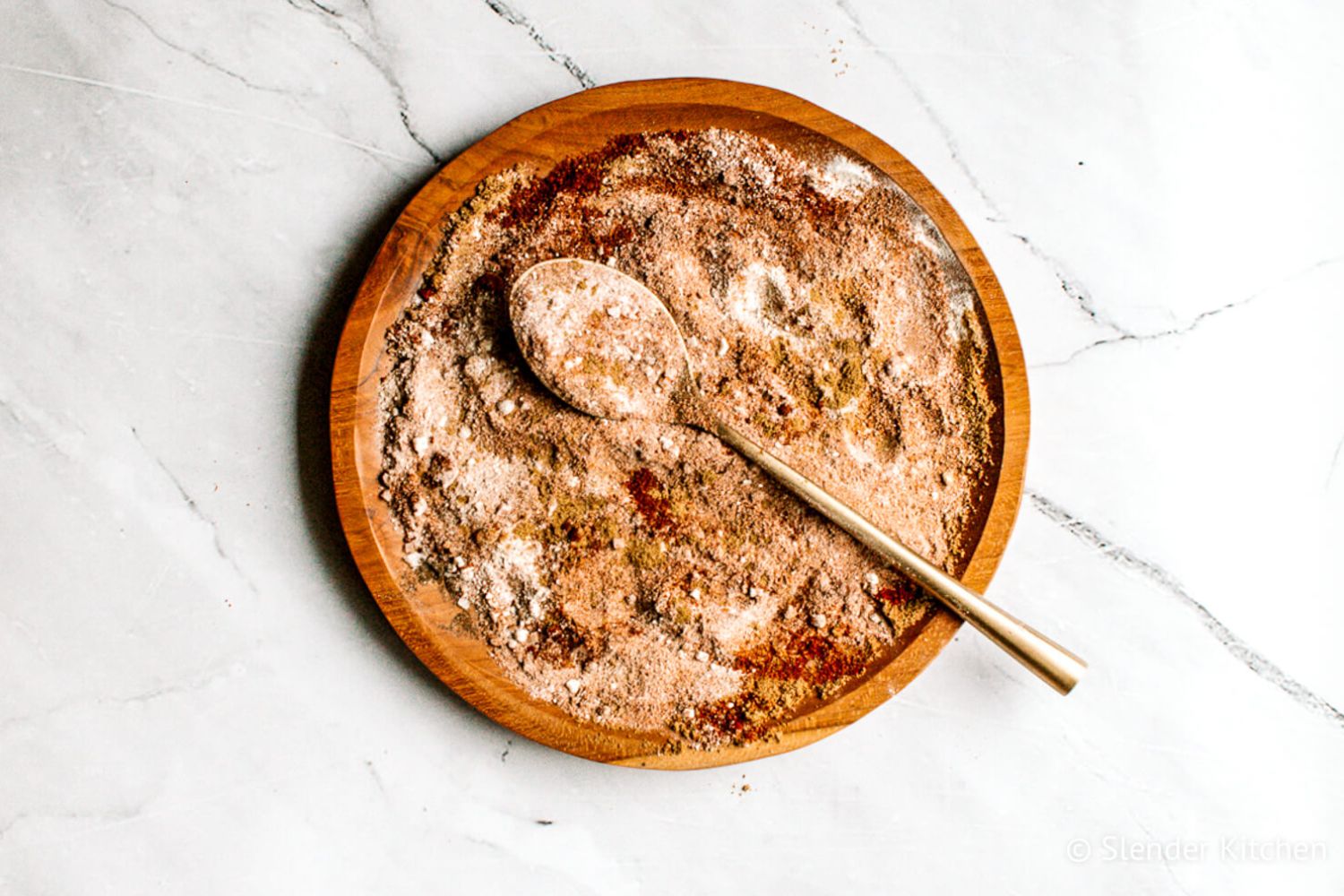
Skip the store-bought fajita seasoning, and make your own with simple, wholesome ingredients you. Homemade fajita seasoning is not only healthier - free of preservatives, excess sodium, and hidden sugars - but it also gives you full control of the flavor!
Whether you're preparing classic chicken fajitas, sheet pan steak fajitas, easy shrimp fajitas,, or even these inventive salmon fajitas, this homemade fajita spice mix is the secret to a burst of delicious flavor.
What is exactly is fajita seasoning? It's pretty similar to taco seasoning, but less spicy. It's made with a combination of chili powder, cumin, paprika, garlic powder, onion powder, salt, and pepper.
While the obvious use is for fajita recipes and Mexican food, it also makes the best spice rub for grilled meats, makes amazing grilled or roasted vegetables, can be added to soups and stews, and even tastes good sprinkled on fresh popcorn.
Looking for more homemade spice mixes? Try this fish taco seasoning, chicken taco seasoning, and blackening seasoning.
Ingredients: How to Make Fajita Seasoning
A store-bought packet of fajita mix will contain a lot of the same ingredients as this recipe, but also some added ones that are concerning.
Depending on the brand these include; corn maltodextrin, corn syrup solids, modified corn starch, and caramel color. That's why I like to make my own seasoning mixes and control the ingredients.
Here's what I include in my fajita seasoning:
- Chili powder: This adds a mild spiciness and smokiness to the seasoning blend. Most chili powder is mild in terms of spice level so this won't make anything too spicy. For a spicier option, you can use a spicier chili powder like ancho chili powder or some of the hot chili powders on the market.
- Ground cumin: This adds smokiness and flavor to the spice blend.
- Paprika: This adds the traditional color to the spice blend and adds a slightly sweet, nutty flavor. You can use sweet or smoked paprika, but I prefer sweet paprika.
- Garlic powder and onion powder: These aromatics add so much flavor to the spice blend and also help to mellow out the smokiness and spice.
- Salt and pepper: Any good spice blend needs kosher salt and black pepper to balance the flavors.
- Additional options: Some people like adding red pepper flakes or cayenne pepper for a spicier fajita spice mix. You may see some sugar in some blends to add a touch of sweetness. Other options include oregano (I like Mexican oregano for this) or coriander. Lastly, some people include cornstarch but I find it isn't needed.
Ten Recipes Using Fajita Seasoning
There are so many ways to use this homemade spice blend! Make a big jar and keep it in the pantry ground meat, grilled proteins, veggies, rice, or any of the recipes below.
- Ground Beef Fajitas
- One Pan Shrimp Fajitas
- Baked Eggplant Fajitas
- Baked Chicken Fajitas
- One Pot Chicken Fajita Pasta
- Chicken Fajita Bowls
- Slow Cooker Chicken Fajita Soup
- Chicken Fajita Casserole
- Pork Fajitas
- Portobello Fajitas
How Much Fajita Seasoning to use per pound?
A good starting point is 1-2 tablespoons of fajita seasoning per pound of meat or vegetables. This strikes the perfect balance, giving your dish bold flavor without overwhelming the natural taste of the ingredients. You can always adjust the amount based on your spice preference—add a little more for extra kick or reduce it for a milder flavor.
This recipe yields about 6 tablespoons of seasoning, enough for several meals. Unlike store-bought packets, which often only cover one dish, you'll have plenty left over to use in future fajita nights or for seasoning grilled meats, veggies, and more!
How to Make Fajitas
Now that you have some fajita seasoning, you will probably want to make fajitas. Here is a quick traditional recipe that can be made with any protein you like. Adjust the cooking time depending on what protein you are using.
- Grab a pound of chicken breast, chicken thighs, steak, or shrimp. Cut the protein into thin strips, unless you are using shrimp. Add the juice of 1 lime and 1 tablespoon of fajita seasoning. Let everything marinate and rest for at least 10 minutes.
- Thinly slice 1 yellow or red onion and 2-3 bell peppers. Use a combination of green, red, orange, or yellow bell peppers. Toss with another tablespoon of fajita seasoning.
- Option 1: Heat a cast iron skillet over medium high heat. Add the vegetables and cook for 5-7 minutes until just tender-crisp. Set on the side and add the meat to the pan. Cook for 3-6 minutes, depending on the protein and the thickness of the meat until it is cooked through and golden brown. The meat and veggies should have some charred edges. Add the peppers and onions back to the pan and serve. SEason and serve in warm tortillas with all your favorite fajita toppings.
- Option 2: Preheat the oven to 450 degrees. Spray a baking sheet with cooking spray. Spread out the protein, peppers, and onions on the baking sheet in a single layer. Cook for 8-12 minutes, depending on the protein, until it is cooked through and golden brown,
Tips and Tricks for Homemade Fajita Seasoning
Follow these tips for the most delicious fajitas and seasoning blend.
- Choose the Right Containers: Invest in clear glass jars or spice containers for storing your homemade seasoning. Label each jar with the spice name, the date it was made, and recommended usage instructions to keep your spice cabinet organized.
- Marinate for Maximum Flavor: For deeper flavor, marinate your meat or veggies with the seasoning before cooking. Mix your spice blend with lime or lemon juice and olive oil to create a marinade that tenderizes the protein while adding flavor. Let it sit for at least 30 minutes for the best results.
- Mix with a Whisk: Use a whisk or fork to blend your spices together in a bowl. This helps break up any clumps and ensures even distribution, giving you a consistent flavor in every bite.
- Adjust Spice Levels: Customize your seasoning to suit your taste. If you prefer a milder blend, reduce the amount of chili powder or cayenne pepper. For extra heat, add more spice or include crushed red pepper flakes.
- Experiment with Ingredients: Feel free to get creative with your spice mix! Add dried herbs like oregano or thyme for additional depth, or try smoked paprika for a smoky twist.
- Store in a Cool, Dark Place: To prolong the freshness of your seasoning, store it in a cool, dark cupboard away from heat sources and direct sunlight. This helps maintain the potency of the spices.
- Use in Other Dishes: Don’t limit your seasoning to fajitas! This blend works beautifully for tacos, grilled chicken, roasted vegetables, or even as a flavorful addition to soups and stews.
- Batch Make for Convenience: Consider making a larger batch of seasoning to save time in the future. Store it in a labeled jar, and you'll always have a quick seasoning option on hand for weeknight meals.
Suggested Sides for Fajitas
When it comes to fajitas, many people enjoy sticking to the tried-and-true classics: Mexican rice, beans, and warm tortillas. While these staples, there is so much room to get creative with sides and toppings.
One of my favorite ways to serve fajitas is to set up a fajita bar with corn and flour tortillas, where everyone can customize their own plates, tacos, or bowls with delicious toppings. Add bowls of guacamole, sour cream or Greek yogurt, shredded cheese, crisp lettuce, fresh tomatoes, diced onions, cilantro, jalapenos, salsa, and fresh lime wedges.
Frequently Asked Questions
Here are the most common questions about making homemade fajita seasoning.
How long does homemade fajita seasoning last?
Homemade fajita seasoning can last up to 6 months when stored in a cool, dark place in an airtight container. To maintain its flavor and potency, it's best to use fresh spices and avoid exposure to heat and moisture.
Can I adjust the spice levels in my fajita seasoning?
Absolutely! One of the best aspects of homemade seasoning is that you can customize it to your taste. If you prefer a milder mix, reduce the amount of chili powder or cayenne pepper. For a spicier kick, feel free to add more heat with cayenne powder, ancho chili powder, dried jalapeno, crushed red pepper flakes, or additional spices.
What dishes can I use fajita seasoning in besides fajitas?
Homemade fajita seasoning is incredibly versatile! While it's perfect for traditional fajitas, you can also use it to flavor tacos, grilled meats, roasted vegetables, chili, soups, stews, or even pasta. Use it anywhere you would use taco seasoning or another savory, slightly spicy seasoning blend.

Fajita Seasoning
- Download
- Send to your inbox
Ingredients
-
2 tbsp chili powder
-
2 tsp ground cumin
-
2 tsp paprika
-
2 tsp garlic powder
-
1 tsp onion powder
-
1 tsp kosher salt
-
1/2 tsp ground pepper
Instructions
(Hide Media)Switch to prevent your screen from going dark.
When you are ready to use it, you will need about 1 tablespoon of seasoning for every pound of protein, plus extra for the veggies. It can also be used for roasted or grilled vegetables, as a spice rub on grilled meats, sprinkled on homemade popcorn or tortilla chips, or added to ground meat for a twist on traditional taco meat.
Equipment
* Percent Daily Values are based on a 2,000 calorie diet. Your daily values may be higher or lower depending on your calorie needs.
The Nutritional Values provided are estimates only and may vary based on the preparation method.
Notes

Get delicious, healthy recipes delivered each week right to your inbox.

Snap a picture and show us what you made on Instagram or Facebook.
Tag us using @SlenderKitchen or #slenderkitchen.



